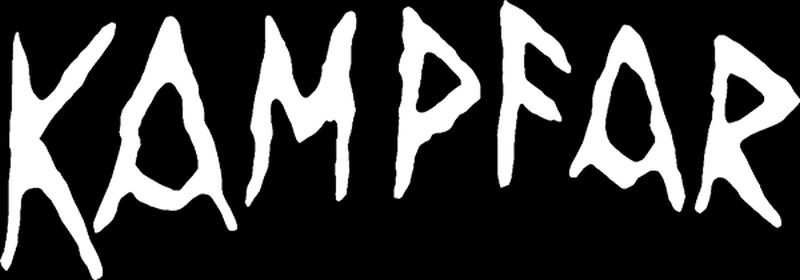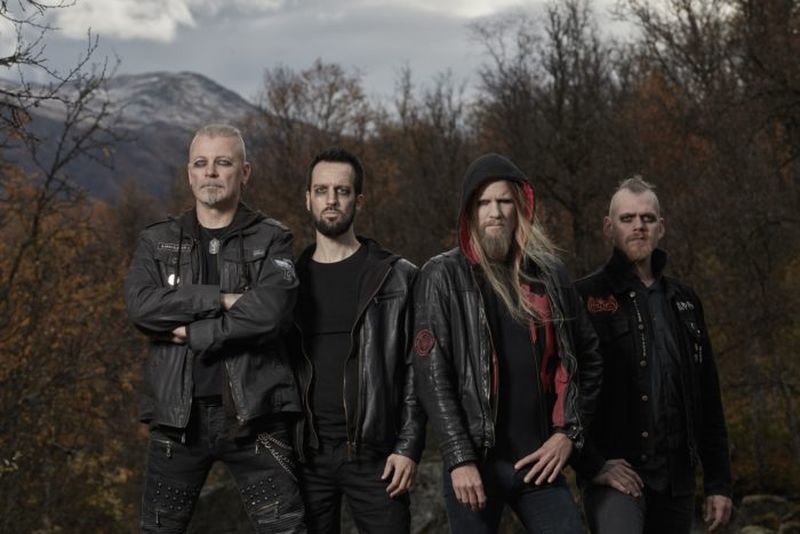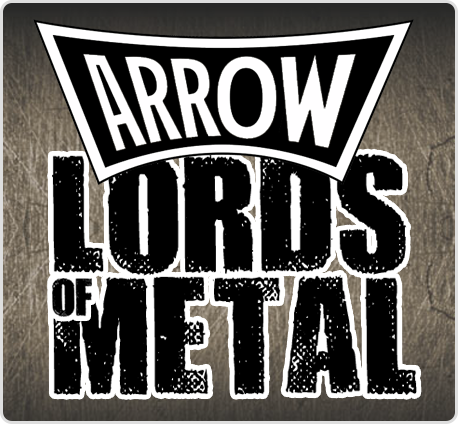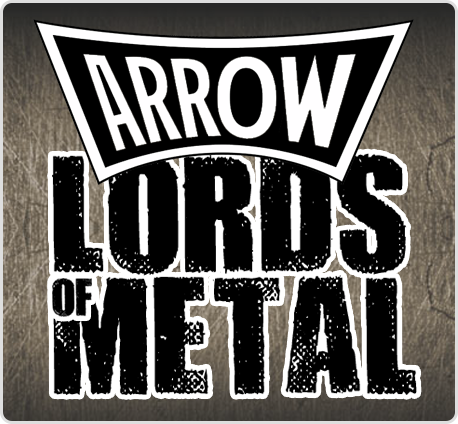
Dolk (vocals): “During the pandemic all of a sudden we were stuck in Hemsedal and we just stayed there, not focusing on anything else than music and ourselves and being there in the moment felt so liberating. It felt like we were back in the nineties, when there were no rules to care about”
Kampfar is één van de Noorse black metal groepen die altijd trouw gebleven zijn aan hun roots. Bijna dertig jaar zijn ze bezig en nog steeds gaan ze geregeld op pad om de snoeiharde black metal die ontstaan is in hun magische omgeving met de enthousiaste fans te delen. Het nieuwe album ‘Til Klovers Takt’ was de aanleiding om een hartelijk gesprek te hebben met zanger Dolk en gitarist Ole.
Vera Matthijssens Ι 28 januari 2023
You did a lot of concerts – EU tour with 21 gigs – recently. What is your experience about that and was it the first time after the pandemic?
Dolk: ‘It was the first time it happened after the pandemic indeed. It was the same tour that was supposed to happen in March 2020, but obviously it did not happen. The Norway shutdown came one week before we were supposed to be starting that tour, so it was moved and it was moved again and it was postponed and everything. It was split in two, because we had shows in May and now we had eight more shows in September, but it was great to finally make it happen and we were actually a bit surprised that the turnout was so good, because we had heard stories about people not coming back to the previous plans of going to shows, because people had started staying home. We had a very, very good tour. It was packed and sold out almost everywhere. So that was very positive.
Let us focus on the new album. When did you write it and can you tell something more about the title ‘Til Klovers Takt’.
Ole: ‘Well, this album was great, sort of because of the pandemic, because when the pandemic hit, we could not go anywhere and the tour was cancelled and all that kind of stuff. We started to postpone things, but we quickly realized that was not going to stop in a while, so we went just back to what we used to do way before. Before this band was big, we just created. We figured out that we had to start creating something. We had to make some music, because what else could we do? Then we started and we really got the inspiration, we got the creativity, and then we realized that we have to make an album of this actually. Now that we had this inspiration and we could really focus on ourselves, because there was nothing else to focus on. So we started writing the songs early after the pandemic hit and then we finished the final pieces towards the end of last year.
But you have taken your time, that is obvious…
Dolk: We have been into this promotional caravan and we have talked about this stuff. It made me even more realize who I was, because when the pandemic hit, a lot of people have asked me – as a musician – how it was, because that must have been hell, not to be out there to be able to do shows, but to be honest, it was the total opposite for me personally. Finally we had all the time in the world and we had nothing that was interrupting us in making music, you know. All of a sudden we were stuck in Hemsedal and we just stayed there, not focusing on anything else than music and ourselves and being there in the moment felt so liberating. It felt like we were back in the nineties, when there were no rules to care about. It was so liberating and in that sense it made it very easy to write music again. We thought about the title. It is a very diverse one. It can be connected to so many levels and so many things. The title is… when you go back in history you can connect it to how it connected Christianity with music in general, all these old musicians that were playing this folkloric stuff. They were always connecting this music to the devil. These old musicians were having their feet based to the rhythm and the devil had its clovenhoof, so the music was always connected to the devil by the presence of the clovenhoof in a way. In another way you can also say that there is a lot of good in it, because the place where we belong – in Hemsedal we come from – it is also connected to all this folklore, the most famous folklore in Nordic history actually. That is also connected to the devil’s music and the clovenhoof and stuff, but in the modern world we can say that we are in the middle of the clovenhoof when we created it too, because we have towns and all these animals next to the wall. It is connected on so many levels.
But animals should not be connected with the devil…
Dolk: ‘Yes but it has been like that, especially in Nordic mythology and history, because they believed in all those kind of sorcery, living underground and stuff and they should not actually be sure of anything, because they got confused about Christianity and all kinds of religions that came. You can see the traces still. You have a lot of these traces over there, you can see carvings of a bear or a fox and they believed that the forces are the souls of the dead ones that lived through and started to live again as an animal. So it was really connected to all that stuff, but the religion always had some animals that they connected to devil worship and this faith is still very noticeable actually.
As you said, the environment has a huge impact on your art. This time we have six chapters. Why did you decide to divide it?
Ole: ‘Well, we did not decide anything before, like I said the creativity just flows. We had no plan when we started, but then we started working on the shades of some songs and it became very clear that we wanted to… – because we did not care about anything other than ourselves, we didn’t care about marketing and how it should be presented and the songs became quite long – well, we put a lot of effort into every single song this time. We’re not going to have a lot of tracks. It is going to be very concise and we wanted to have also a cover for every song, a picture that connects to every song. It was just the way that we wanted to make an album. We decided that this is what we want to do, because from a marketing perspective it is probably suicide. It is not the way you do it these days, especially not today. You want twelve songs that are three and a half minutes long. You want a song that you can make a video for and you want a song that can be played on the radio maybe. We didn’t care anything about that, you know. We really like the album format. We want everything to fit in with vinyl and dividing it in six parts was just what made sense for us.
Dolk: ‘It is also very liberating, because we moved back to Norway with a label. We have now a small label, Indie Recordings, and after almost thirty years in this business, we were so tired of kind of all these moves that we had to adapt to a kind of format. Like with Napalm Records, we had to do this and that and everything was so clear. Being thirty years in this business, we for sure know the tricks how to get bigger on Spotify or whatever. We know how to do that, but it is not our goal. Like I already said, during the pandemic we felt like we were back in the nineties again and we just wanted to do what we felt was right. We had so much confidence in what we wanted to do after all these years, so in my opinion I think the base of our followers or listeners or fans – or whatever you call them – I think most of them will buy the album anyway, so we just provide the music and they can decide what to do. It is not like our goal is to sell the most of albums or to get big on Spotify. It is not about that, it is so much deeper, so that’s why we also ended up with songs that are eight minutes, even though it is commercial suicide in a way.’

It should be a summary of all the periods the band has gone through. How do you see that?
Ole: ‘The whole process of making this album felt like we were back in the nineties again, because, even though we have the internet and we can talk and stuff like that, we felt isolated in some way during the pandemic, just like it was in the nineties. Then your world was so isolated, but you didn’t talk about that enormous contact with the rest of the world and another thing was that for the first time since long, we had to do the same thing as we wrote to record things, because we could not go to Sweden to go to the studio and record. We had to do it ourselves. We had to do everything ourselves and I think, this feeling, just us, being introvert and doing what we do, doing everything ourselves, that looked a lot like everything we did back in the days and at the same time we continue our progress on what we have made on the previous albums and the more modern times, so I think there is definitely a big link over all the thirty years that play into this album.
How would you describe Hemsedal, the place where you live, and in which ways is it so inspiring?
Dolk: ‘Well, it has been sort of the base for comfort for almost thirty years, you know. Everything started out there and now it has even been more important to us. For the last ten years it has been very important for us, but now – especially with this album too – there is a lot of traces, there is a lot of depths coming into the lyrics and into the music that are connected to this place, because it is in the middle of Norway almost and for hundreds of years it has been one of the main roads if you want to go to the coast of Norway. It is the main road that has gotten all these influences from Europe, from other countries, almost from the very beginning. It is a place that has a rich culture and it is a place that has all these special vibes from all over connected. You can still see old churches there, you can see traces of the past everywhere. It is not that it is only important to us. It is important to the whole essence of how Norway developed actually, so I think it will become more and more important to us and it is also because our roots are there of course.
Ole: ‘Nature is also breath-taking, because every time we go there it looks different. From autumn to winter to summer, it is almost like it is a different place, a new place every time. We did this video for the second song ‘Urkraft’, where we had this professional photographer with us, and when he looked at the video and that is also what people are telling us, he said: ‘oh how did you find this isolated place with the fantastic nature and stuff like that’ and the answer is: we just walked outside. I literally just walked from inside the cabin making music and then we had this guy with us with the drone and then he said: are you ready? And then we just walked! It is not a gimmick, it is not that special, it is just our home, the whole nature of the place is very inspirational and the fact that you can easily go there, but you definitely feel that you are in the middle of nature basically.
The album is a kind of cycle, you did it in four seasons, isn’t it?
Dolk: ‘Absolutely. That is also a wire going through this album. It is a circle of life and it goes also back to the title, that there is this cycle of life. Life, society, history… all this is really old, but this stuff goes into that thing. When we are up there working, you get inspiration from your surroundings. Sometimes the hills look like they are on fire because all the trees are red and yellow and that gives you some kind of inspiration. And next time you are there, it is like three metres of snow and rabbits and foxes are running around outside the cabin. I have been connected to this place ever since I was six years old and what really fascinates me is like – even now when I am soon turning 50– I still get amazed by it. I am a Norwegian and I should be used to this, but I never get used to it, because it is sort of something that is much bigger than me in a way and in that sense you feel really small, but it is a great feeling to feel connected in a way and I think that the music connects it with us from the first moment.
Which season did you actually enjoyed the most?
Dolk: ‘That is difficult to say. We already mentioned it, it is a cycle, I don’t think too much about that actually, but everything is different all the time and for me personally I really like a short period during the autumn when everything looks like it is on fire. I think that is very special, because there are almost no pine trees. There are leaves on almost all the trees and it makes it look quite striking you know.’
You have found very beautiful artwork from Heinrich Bürkel. How did you lie your hands on that?
Ole: ‘We all like art and paintings to have something visual to connect to the music. It is abstract and maybe you can connect it to an image and since we also figured out that we wanted to have a cover or a picture for every song, we were searching a lot through different artists. But when we found this picture, it was amazing. All of us said immediately: that is the picture. That is the painting that should represent this album, because you could see immediately that it gets all the spots and what we really like about painting. It is sort of understated. It doesn’t jump out with some extremes. That is the whole point. You can see in a way it looks very nice, it is fascinating, but you can also see that underneath there is something not quite right. There is something behind or something between the lines there, it makes it a little bit uncomfortable when you actually start looking at the details and the faces are not very clear in a way. It fits the title, it fits the whole concept of the album actually. For us at least.’
Dolk: ‘You can say that it is a typical thing to think that a Norwegian band chooses a Norwegian artist, but we don’t think like that. The thing is that we maybe represent the painting on a different level than the artist might have seen it. It doesn’t matter for us. For us, what matters to us, is that it is so connected to the album and to the lyrics. It could have been an artist sitting in the middle of Hallingdal or Hemsedal, painting this back in the days and it is so connected with what we want to present on this album, so we might see the painting in a different way than the artist, but it is the same thing with music. With the whole music industry nowadays, I think it is a little bit sad that people cannot judge by themselves anymore. Everything is on social media you know. You shouldn’t do a real video, because the whole magic is gone, the magic of this painting is still magic in my opinion and it should be connected to the music and maybe everyone should get a different approach to it.’
What are the plans for the near future?
Ole: We have a couple of festivals. One in Norway and one in Mexico. For 2023 we don’t have any plans right now, but most of all we are just excited to release the album and we really hope that people will enjoy it or that they will at least listen to it and give it a chance, because we are very proud at this album I have to say.’
Dolk: ‘When it comes to concerts now after all these years, we are not planning ahead for two years at the time, because we are in a situation that we don’t have to search for opportunities to play live anymore, because we got the opportunities coming our way, so we will go on tour when we feel like doing it. Right now we are looking into options to tour the US actually, so what will happen we don’t know yet. There is a grand demand, because we haven’t been there since 2011 actually.’




